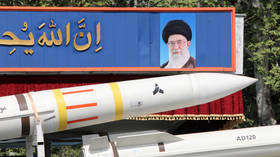No more fighting, but victims’ misery continues
The fighting may have come to an end in South Ossetia, but the suffering and grief of the victims of the conflict is far from over. Almost every family lost a relative in the Georgian attacks on the unrecognised republic.
With the humanitarian corridor now completely under peacekeepers' control, refugees continue to flood into Russia's south. They are recovering from being trapped under Georgia's shelling in the cellars of the South Ossetian capital of Tskhinvali for up to five days, without food and water.
The first thing they do on arrival to the camp is check out the lists of those who have already registered. They want to find their relatives who managed to survive the massacre committed by Georgian troops during the first days of bloodshed.
People who come to the refugee camps on the Russian border do not stay for long. Conditions in the camp's tents, which were quickly erected in an open field, are not exactly what children and old people are comfortable with.
So, after a short rest, they are registered as official refugees on Russian territory, and re-directed to several regions of Russia's south. There they can find better conditions, in sanatoriums and specially equipped schools, and they can get proper medical care and humanitarian help.
The aid that is being transferred to South Ossetia through the safe corridor includes not only food and medication, but also much needed power generators, as the unrecognised republic's power supply system lies in ruins.
Two temporary hospitals have been stationed in the republic's capital of Tskhinvali, to replace those destroyed by the Georgian army.
Already promised financial aid from Russia, amounting to $US 400 million, is to be used to help restore the devastated region.
EU member states also promised to give financial assistance, with the Netherlands and Spain pledging € 500,000 each. France has already sent a plane full of medical equipment to the airdrome near the border of the humanitarian catastrophe zone.
Russian emergency minister Sergey Shoigu, who has already visited the breakaway region, believes that restoring it will take up to two years.
He said: “I was here back in 1992 (during the first war between Georgia and South Ossetia after the break up of the Soviet Union) and had very heavy impressions of what I saw. Destruction everywhere and people suffering. I hope this will never be repeated again. I have discussed with the authorities of South Ossetia what is needed and how we can help in the first place. We will take care of the necessary infrastructure: gas, water, electricity, hospitals – we have brought here everything that's needed.”
Funerals are underway on both sides of the Russian border, in North and South Ossetia.












